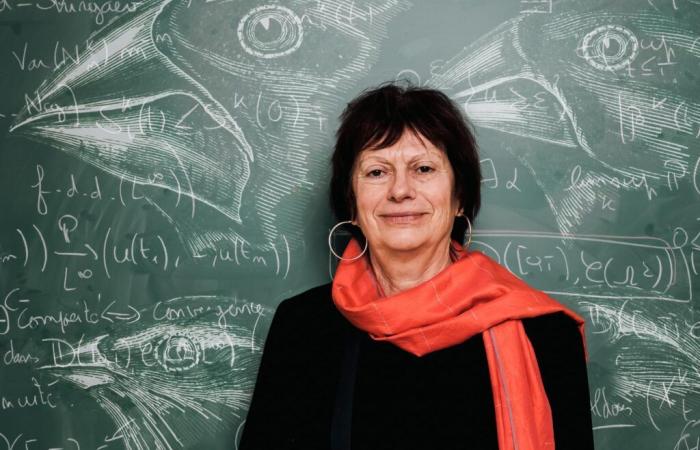Professor of Applied Mathematics at the École Polytechnique, Sylvie Méléard was rewarded at the Academy of Sciences with the Irène Joliot-Curie Prize – Woman Scientist of the Year, which rewards a woman who has made a remarkable contribution to the field of research.
The interface between mathematics and biology is a booming field of research, to which Sylvie Méléard has contributed greatly. This probability specialist initially worked on mathematical models whose applications were oriented towards communication networks or physics. “I then participated in a working group at the École Normale Supérieure in Paris organized by a biologist in the early 2000s, who was looking for collaborations with mathematicians. I got into the game,” explains the researcher, Professor of Mathematics at the École Polytechnique since 2006, rewarded today with the Irène Joliot-Curie Prize – Woman Scientist of the Year.
His expertise in probability provides a new and original point of view for biologists to study population dynamics, whether it concerns the emergence of species, the growth of bacterial populations or the development of cells. Thanks to a formalism that integrates random behaviors (birth, mutation, competition, etc.), she designs models with her colleagues to provide a mathematical summary of these mechanisms.
At the Center for Applied Mathematics (CMAP*), Sylvie Méléard leads the PEIPS (Population, Evolution and interacting Particle Systems) team. She is also a member of the Inria MERGE project team. “Currently, I am working with biologists specializing in bacterial growth and antibiotic resistance as well as oncologists on the mechanisms of mutation appearance in leukemia. » Thanks to an ERC advanced grant, she is also leading the SINGER project (Stochastic dynamics of sINgle cells: Growth, Emergence and Resistance). “For several years, biologists have had tools to observe single cells, allowing them to see bacterial growth and cell divisions one by one. Our models are very suited to these observations,” specifies the researcher.
For Sylvie Méléard, exchanges and meetings constitute an essential part of research. This conviction is also the driving force behind the Mathematical Modeling and Biodiversity chair that she has held at the École Polytechnique since 2009. A whole network of biologists and mathematicians continues to be woven, with the aim of meeting each other in a regularly and to finance projects where interactions between the two disciplines are reciprocal.
The Irène Joliot-Curie prize also intends to highlight the place of women in science, an issue of which Sylvie Méléard is obviously aware. “I try to listen to young women scientists, and also support them when they return from maternity leave, for example,” explains the researcher who has supervised numerous thesis students. As part of her ERC project, she encourages young female lecturers to come to the laboratory to come and do full-time research for a year.
*CMAP: a mixed research unit CNRS, Inria, École Polytechnique, Institut Polytechnique de Paris, 91120 Palaiseau, France
France






